
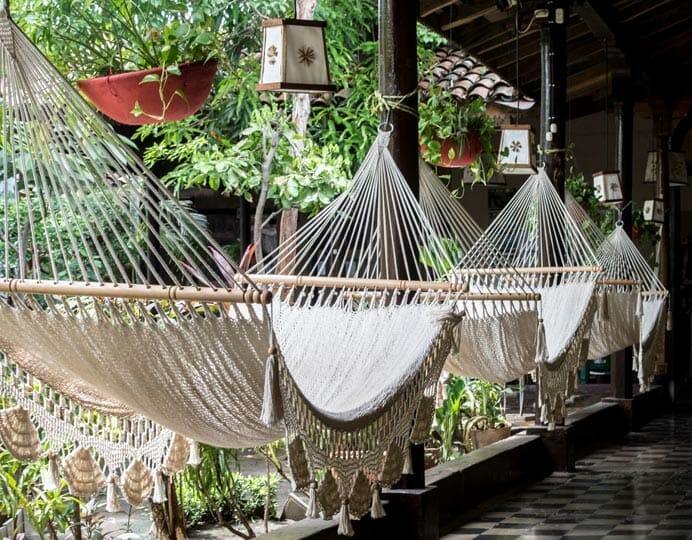
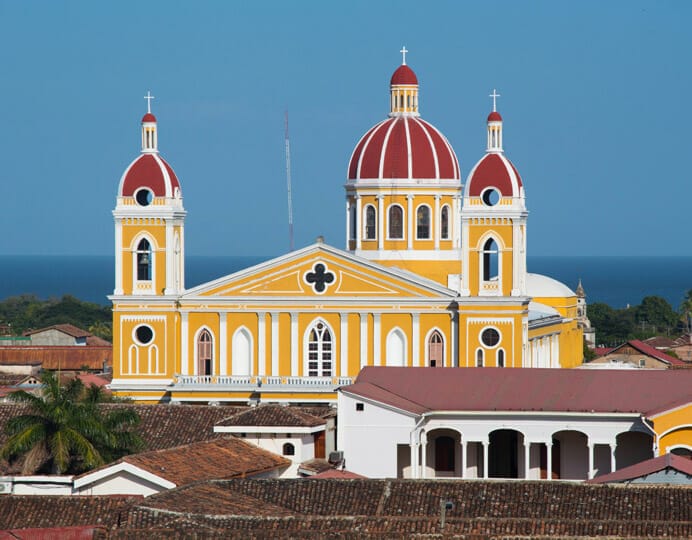
The Hammock, a cultural heritage of Nicaragua
Nicaragua has a well-defined handicraft tradition that over the decades, has been a real means of subsistence for families due in part, to a manufacturing technique passed down from generation to generation.
Masaya, is the city where our hammocks are made. It is located 29 kilometers southeast of the capital and is classified as the center of Nicaraguan handicrafts, due to its customs and strong indigenous heritage. Figure of the national handicraft, the hammock of Nicaragua symbolizes the cordiality and the human heat. It represents the open arms of Nicaragua for all those who visit this country.
Symbol of the Nicaraguan identity, the Nicaraguan hammock perpetuates a pre-Columbian custom, and the pride of the ancestors whose essential value is in the hands and creativity of the craftsmen.
Actuellement, en plus du hamac de montagne traditionnel et du Hamac à barre, des hamacs-chaise ont été fabriqués et ont connu un grand boom en raison de son utilisation confortable dans les appartements européens ou nord-américains.
Manufacturing process of Nicaraguan hammocks
In the manufacture of the Nicaraguan hammock, there is a strong tendency of female work in the manufacture of the bangs, fabrics and details of decoration. The participation of men is more in the elaboration of the body, the arms and the assembly of the hammock.
Entirely manual, the manufacturing process of the artisanal hammock begins from the moment when the wire is twisted to be transformed into manila of different calibers.
This process is known as twisting (twisting is not done by the hammock producer but by small workshops whose purpose is to twist the wire to make it more resistant. This process is done manually with a wheel and a wooden pole.
The making of a Nicaraguan hammock is divided into four steps:
Bed Sewing Step:
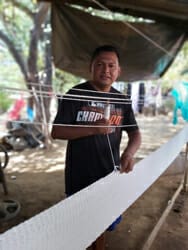 As mentioned above, these are mainly the men which are intended for the development of the "body" of the Hammock.
As mentioned above, these are mainly the men which are intended for the development of the "body" of the Hammock.
The cotton thread is wound on the loom in a parallel fashion. They use a kind of big wooden needle to weave the hammock. This is one of the longest steps of the production process.
This piece is then removed from the loom to make the "sleeves" or "arms" of the hammock. A sleeve is a wire wrapped in rope form that is attached to the ends of the hammocks. Each end of the hammock has about 8 to 12 sleeves, which are evenly distributed over a number of threads.
Fringe knitting:
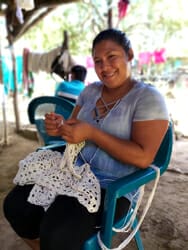
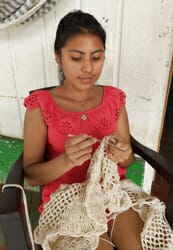 This work is done only by women.
This work is done only by women.
Again, this is a process that is entirely manual. Here the bangs or "edges" of the Hammock are a decoration on both sides of the Hammock. The knitting time is determined according to the style, size, and customization of the customer.
Assembly step:
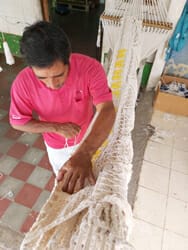
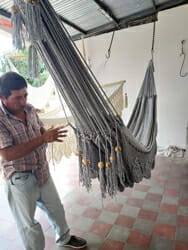 This is the last step in the manufacturing of the Hammock. Are assembled the "arms", and the respective ornaments (bangs and wooden balls). The craftsmen use the wooden spools to insert the sleeves through each hole. Finally, the bangs are sewn along the edge of the hammock body. This phase is the fastest and least complicated and is usually done by the same person who makes the arms.
This is the last step in the manufacturing of the Hammock. Are assembled the "arms", and the respective ornaments (bangs and wooden balls). The craftsmen use the wooden spools to insert the sleeves through each hole. Finally, the bangs are sewn along the edge of the hammock body. This phase is the fastest and least complicated and is usually done by the same person who makes the arms.
Quality control:
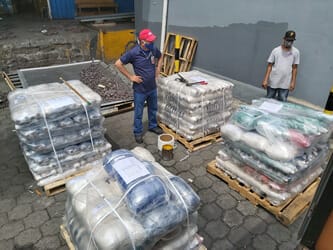 It is a selection, control and verification process that is carried out personally by 100% of the hammock shop owners.
It is a selection, control and verification process that is carried out personally by 100% of the hammock shop owners.
It starts with the choice of raw materials and accessories, then by supervising each step of the manufacturing process of the hammock. This is to ensure the quality and finish of the product.




